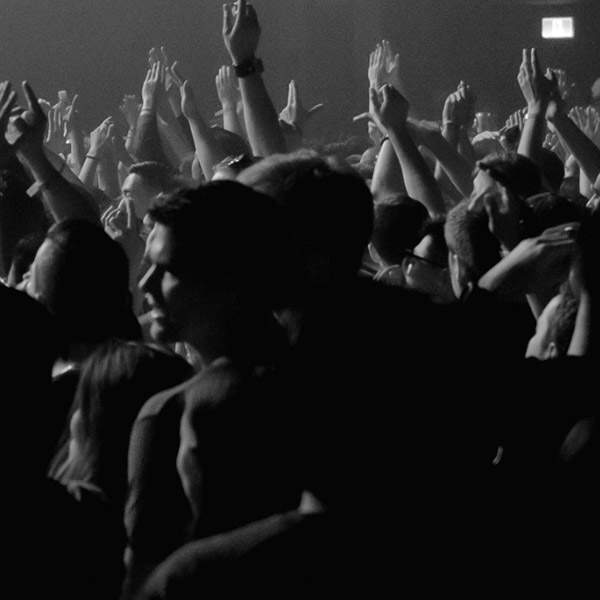Daryl Hall and John Oates Look Back on Playing With Mick Jagger at Live Aid: ‘It Was Shocking, To Be Honest’
Live Aid boasted plenty of participants who could be considered MVPs – particularly organizer and driving force Bob Geldof. But for a primetime chunk in Philadelphia on June 13, 1985, Daryl Hall & John Oates held that distinction.
The two — who met in the City of Brotherly Love in 1967 and began working together three years later — rolled on stage at about 9:50 p.m. at John F. Kennedy Stadium, starting with their Billboard Hot 100 toppers “Out of Touch” and “Maneater.” They also brought out former Temptations members Eddie Kendricks and David Ruffin to recreate part of their then-recent Apollo Theater medley of the group’s “Get Ready,” “Ain’t Too Proud To Beg,” “The Way You Do the Things You Do” and “My Girl” — complete with some of the Motown group’s trademark dance steps.
But wait, there was more. The augmented Hall & Oates crew stayed on stage to back up Mick Jagger, performing sans Rolling Stones, on his solo tracks “Lonely at the Top” and “Just Another Night” as well as the Stones’ “Miss You.” Then a high-heeled Tina Turner joined the proceedings, taking Michael Jackson’s place on “State of Shock” (a Jagger duet from the Jacksons’ Victory album) and a show-stealing “It’s Only Rock ‘n Roll (But I Like It),” during which Jagger, who’d changed outfits mid-song, memorably ripped off Turner’s leather mini-skirt.
“I felt the significance of it, that’s the best way to put it,” Hall recently told Billboard. “It was one of those moments where we knew something significant was happening.”
“At the time we were at the top of our game in the world of pop,” says Oates, speaking separately to Billboard. “And it was Philadelphia, so it made sense for us to be there. The vibe was great and the energy was just insane. It was something I’ll never forget.”
Neither Hall nor Oates remember specifically how their Live Aid booking came about; both say it came through the duo’s then-manager Tommy Mottola. And because they had performed with Ruffin and Kendricks at the Apollo less than two months before (the Live at the Apollo album came out September 1985), it seemed appropriate to have them be part of Live Aid as well.
Backing Jagger came somewhat out of the blue, however. “Mick had done a solo album (She’s the Boss) at the time and didn’t really have a backing band,” Oates recalls. Hall & Oates’ guitarist G.E. Smith had played guitar on one of the album’s tracks, “Secrets,” which helped connect the two acts. “This really wasn’t initiated by me at all,” Hall says. “I was just a soldier in the army and other people were saying, ‘Mick wants to do this. You’re gonna do this with him and Tina’s involved and you guys bring out David and Eddie…’ It was all sort of planned out, and I just said, ‘Sure, sure, sure.'”
Rehearsals with Jagger at SIR Studios in Manhattan were as memorable as the show itself for Oates. “We had prepared the songs and gone over them and had them pretty well down ‘cause, of course, our ‘80s band was so frickin’ good,” Oates remembers. “We were on stage playing, doing whatever we were doing, and Mick comes into the room and basically jumps on stage, just a ‘you guys ready?’ kind of thing and he said ‘Let’s go!’ and called out a song. We counted it off and he went into the song as if he was playing a giant stadium. He did the whole thing — the chicken wings, prancing around the front of the stage, full-on. It wasn’t like we were in a rehearsal studios just playing the songs; he actual performed it, treated it like it was a full-out performance in front of no one except us. It was shocking, to be honest with you, but it was so frickin’ exciting.”
Hall adds that Jagger was “nervous” about the performance, which was his most high-profile away from the Stones at that point. “He asked me afterwards, ‘How did we do? How did I do?’ It was that kind of thing,” Hall says. “That was interesting, ’cause I see these things from the inside pretty much. Once we got on stage we were just a machine.”
Both Hall & Oates have fond memories of the hang at the stadium that day. “Considering what we were there for, which was starving people in Africa, it was a joyous event,” Hall says. “I would just keep bumping into people and meeting people. Everybody was smiling and shaking hands. It was a really friendly event considering it was the top of the world’s artists at the time. And ’cause we were at the end of the show I got to see everybody as they were performing, one after the other after the other. It was really the ultimate experience to watch as well as participate in.”
Oates had also arrived early in the day to soak in the atmosphere and enjoyed the camaraderie backstage. “Everyone who was done in their trailer, dressing room or wasn’t performing was basically just hanging around. Everybody was nice and pumped. Jack Nicholson, who was a buddy, was there emceeing. It was cool to be in a casual environment, with people all around.”
Oates doesn’t remember much about the night’s shambolic “We Are the World” finale. “I probably blew out my energy during our set and just kind of went through the motions for the encore,” he says. Hall recalls that “everybody was rushing the stage, trying to get in front so people would notice them. (Laughs) I’m not saying that in a bad way; everybody was just kind of feeling good and doing it. It was a lot of adrenaline and energy flying around.”
Promoter Larry Magid, whose Philadelphia-based Electric Factory Concerts firm produced the U.S. show in conjunction with the late Bill Graham, says it was a point of personal pride to have native acts such as Hall & Oates on the bill. “It just worked out to have those acts on,” he remembers. “Hall & Oates with Eddie Kendricks and David Ruffin; both of them were living in Philadelphia at the time. I liked that. I liked Patti LaBelle being from Philadelphia. The Teddy Pendergrass thing [his first performance since a 1982 car crash left him paralyzed from the chest down] was overwhelming, very emotional. And the opening act, the Hooters, was a hot new act from Philadelphia at the time and I was so happy we were able to showcase them.”
Hall acknowledges that having the Stateside portion of Live Aid in Philadelphia (a simultaneous concert took place in London) did make it more resonant. “I felt a little bit of pride in that,” Hall says. “I was glad Philadelphia was the place.”
Hall & Oates, of course, formally ceased working together in 2024 after 18 studio albums and 16 top 10 singles on the Billboard Hot 100. Hall is still touring on the heels of his 2024 solo album, D, while Oates is on the road and will release his new album, Oates, on Aug. 29.
Joe Lynch
Billboard






